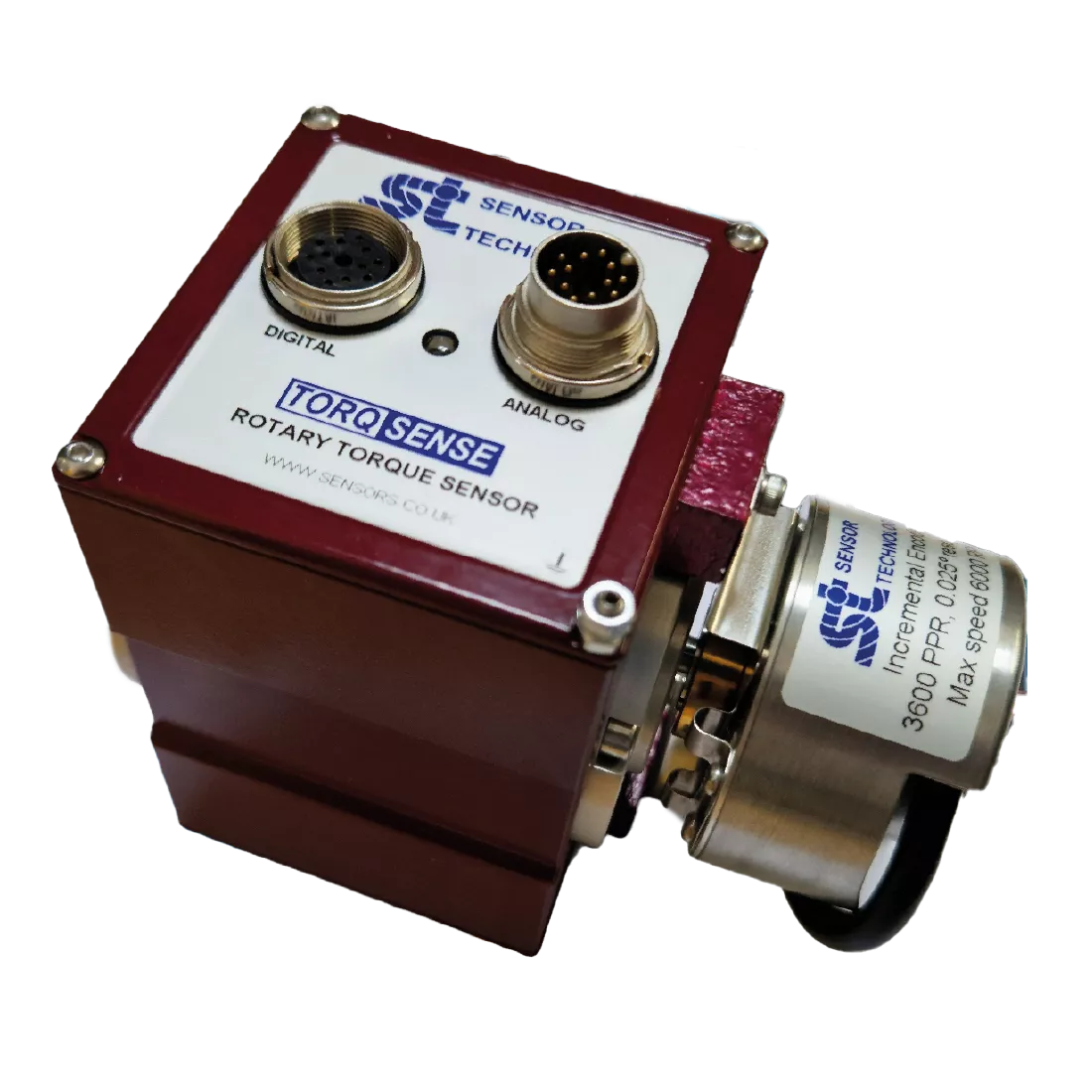SGR523 Digital Rotary Torque Sensor
Suitable for torque measuring, testing, feedback control of drive mechanisms and process control applications
Key features
- Transducers from 175mNm to 20Nm. (Higher ranges to follow)
- Large fully functional overrange capability of 250%
- Minimal side and end load errors
- Low hysteresis error of ± 0.05 % FSD
- Low linearity deviation of ± 0.05 % FSD
About the SGR523 Digital Rotary Torque Sensor
Torqsense Digital rotary strain gauge series (SGR) Transducers use non contact technology eliminating the need for noisy slip rings. They are suitable for torque measuring, testing, feedback control of drive mechanisms and process control applications.
The SGR series transducers use modern strain gauge signal conditioning techniques to provide a high bandwidth low cost torque measuring solution with high overrange and overload capabilities.
Key features
- Transducers from 175mNm to 20Nm. (Higher ranges to follow)
- Large fully functional overrange capability of 250%
- Minimal side and end load errors
- Low hysteresis error of ± 0.05 % FSD
- Low linearity deviation of ± 0.05 % FSD
- Zero variation in torque signal with rotation (cyclic variation)
- Non contact signal transmission, no slip rings to wear out
- High digital sample rate of 4000 samples per second
- Adjustable torque data smoothness, low pass filter
- Speed measurement / Angle / Power computation
- Wide power supply range 12-32 VDC
- Optional integrated Ethernet allows a transducer to be accessed
by multiple users simultaneously, from anywhere the
connected network reaches.
Technology
The SGR series torque transducers use a full four element strain gauge bridge to measure the torsion present on a shaft. The full bridge helps to diminish errors from any off-axis forces that are sometimes unintentionally applied to the transducer in some test setups. The full bridge also increases the sensitivity and the temperature performance of strain measurement.
A rotor mounted ultra-miniature microcontroller measures the strain gauge bridge and transfers the information back to the stator digitally eliminating any noise pickup usually associated with slip ring and other analog methods of transferring torque data from rotor to stator. External noise pickup into the gauge wiring is
virtually eliminated due to the short distance between the strain gauge elements and the rotors measuring circuits.
A multipoint calibration method reduces any linearity errors within the sensor. A large functional overrange capability allows the peaks of a torque signal to be captured more faithfully without any clipping when operating the sensor close to its full scale rating.
All this combined with a mechanical overload capability of over 400% make the SGR series torque sensors a very robust and accurate torque measuring solution.
Do you need this sensor for your next project?
Request a no-obligation quote or send us your contact details for a free, no-obligation consultation. Our sales engineers will then contact you within a maximum of 1 to 2 working days.
Product downloads
Talk to our experts
Not exactly what you are looking for? We offer standard sensors, but can also help you with sensors adapted for you or a fully customised measurement solution. Contact us for advice or pricing.
Talk to an expertTechnical Specifications
| Specification | Value |
|---|---|
| Torque range | from 175mNm to 20Nm |
| Low hysteresis error | ± 0.05 % FSD |
| Low linearity deviation | ± 0.05 % FSD |
| High digital sample rate | 4000 samples per second |
| Wide power supply range | 12-32 VDC |

